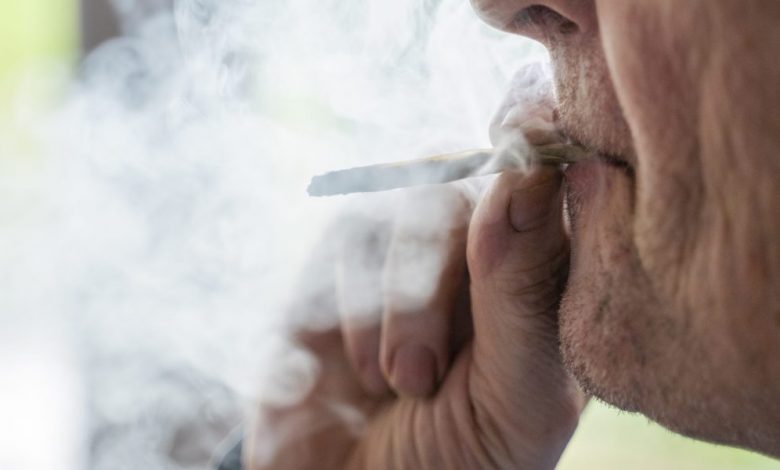Marijuana-related emergency room visits by California seniors have increased by over 1,000% over the past 15 years

As more states legalize marijuana, older adults are increasingly turning to cannabis to relieve a variety of physical and mental health symptoms. Increased access to marijuana has led to a record number of children visiting the emergency room for accidental use. Now, a new study finds that older adults also face similar consequences.
In California, cannabis-related emergency room visits for people age 65 and older increased relatively by 1,804% between 2005 and 2019.
The study, published in Journal of the American Geriatrics Society Data used earlier this month by the Department of Healthcare Access and Information. Over the approximately 15-year span, emergency room visits related to cannabis increased from 366 visits in 2005 to over 12,000 visits in 2019. These visits were categorized into cannabis abuse and unspecified use, cannabis addiction, and cannabis intoxication .
Older men had a higher ER visit rate compared to women in 2019, although women faced a higher overall visit rate over the 15 years, according to the study.
Older Black adults faced the highest increases in cannabis-related emergency room visits compared to those of other racial or ethnic origins. The authors note that there is limited research on older Black adults and the particular risk factors associated with the increase in cannabis-related emergencies, and suggest that studies need to focus on this in the future.
Why is there an increase in cannabis-related hospital visits for older adults?
The increase in ER visits resulted from greater increases in marijuana use following state legalizations (California legalized recreational marijuana use in 2016) and a decrease in stigma associated with the drug. A 2022 study by the Pew Research Center found that nearly 90% of Americans believe marijuana should be legal for medical, recreational, or medical-only use. Visits to the emergency room increased most dramatically between 2013 and 2017, so the legalization of recreational marijuana doesn’t appear to have impacted the number of hospital visits in the state.
Older adults can use cannabis for medicinal purposes and to relieve many symptoms, including pain, trouble sleeping, muscle stiffness, restlessness, and anxiety and depression. A 2020 study found that 61% of older adults who used cannabis started as older adults, and this group was more likely to do so for medical reasons.
“I expect cannabis use for pain relief has increased because it’s another way to relieve pain, and now that it’s legal in many states for medical and recreational purposes, older adults are feeling like this is another way.” is an option to try,” says Dr. Alison Moore, study author and director of the Department of Geriatrics, Gerontology, and Palliative Care at UC San Diego School of Medicine’s medical school. “Although evidence of cannabis’ ability to relieve pain is limited, there is some data that it may work, so older adults give it a try.”
A 2015 study found “moderate-quality evidence” that cannabis reduces chronic pain symptoms and muscle stiffness, while another from 2017 concluded that there is “limited evidence” that cannabis reduces neuropathic pain. Cannabis use is also associated with complications that can cause problems with memory, reaction time, and stability, which can increase a person’s risk of falling. Older adults are more likely to take other medications, and drug interactions could also be a problem.
Educating older adults about cannabis use
More education is needed about the dangers of cannabis use in older adults, who may experience worse health complications from the substance, say the study’s authors.
“I see a lot of older adults who are overly confident and say they know how to handle it – yet as they age their bodies are more sensitive and the levels are very different from what they might have been trying to do when they were younger,” says Dr. Benjamin Han, study author and geriatrician in the Department of Geriatrics, Gerontology, and Palliative Care at UC San Diego School of Medicine’s Faculty of Medicine, in a press release.
The study’s authors say health officials should make older adults aware of some of the potentially harmful consequences of cannabis use and normalize conversations about the more widely used drug.
“We know from working with alcohol that older adults are more likely to make a change in substance use when they see it linked to an adverse medical symptom or outcome – so a similar association with cannabis use could help in behavior change,” says Moore in the press release.
Many drug use questionnaires combine marijuana use with other illicit drugs, Moore says in the release, which may make older adults more cautious about speaking openly about their marijuana use. The critical next step is to put cannabis use into its own category and examine how it can benefit an older adult while also assessing the risk.
“Providers can then ask how often cannabis is used, for what purpose — such as medicinally for pain, sleep or anxiety, or recreationally for relaxation — in what form (smoked, eaten, applied topically), and if they know how much THC and CBD it contains. Once the provider has this type of information, they can educate patients about potential risks of use,” Moore says in the press release.
Learn how to navigate and build trust in your organization with The Trust Factor, a weekly newsletter exploring what leaders need to succeed. Sign up here.



